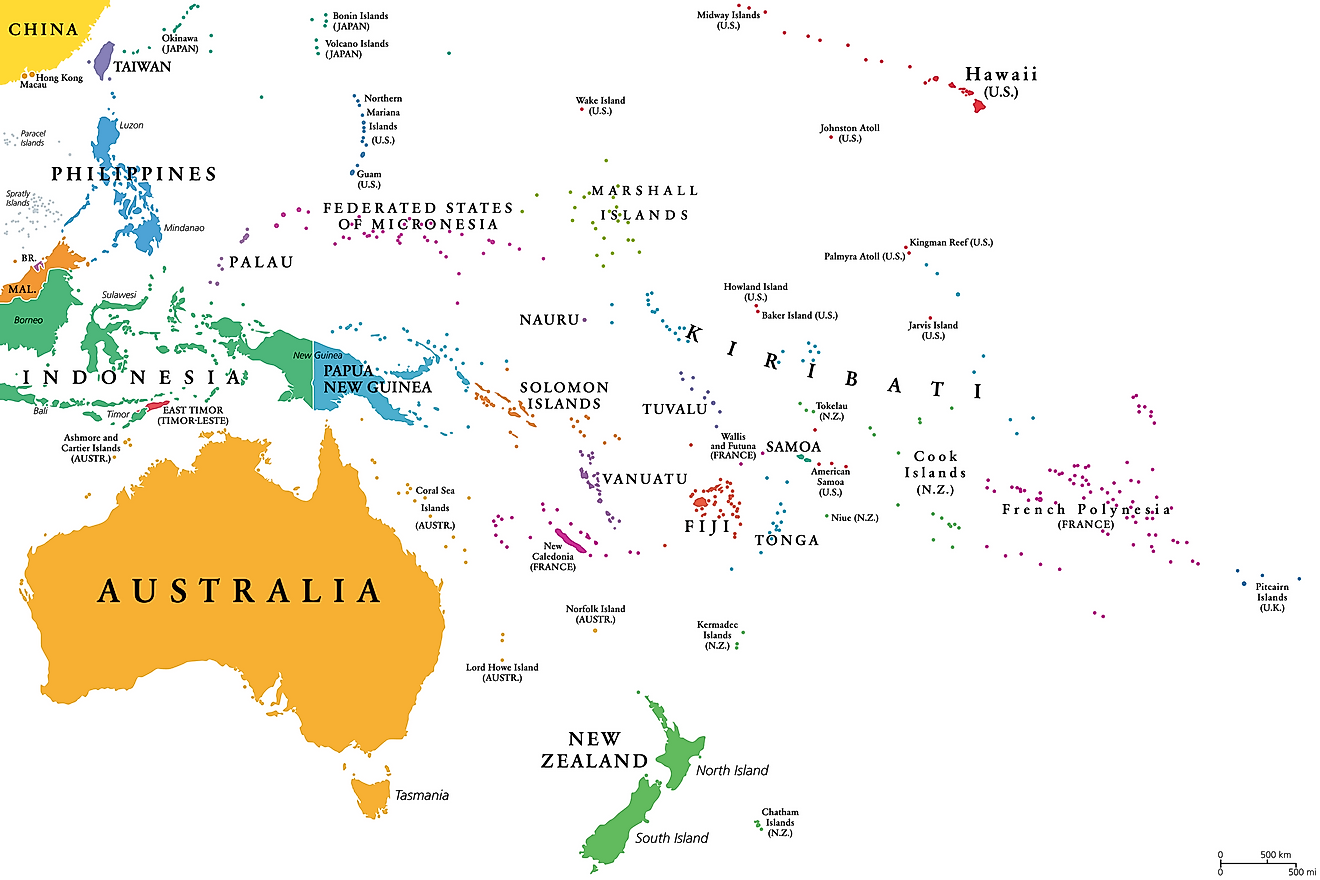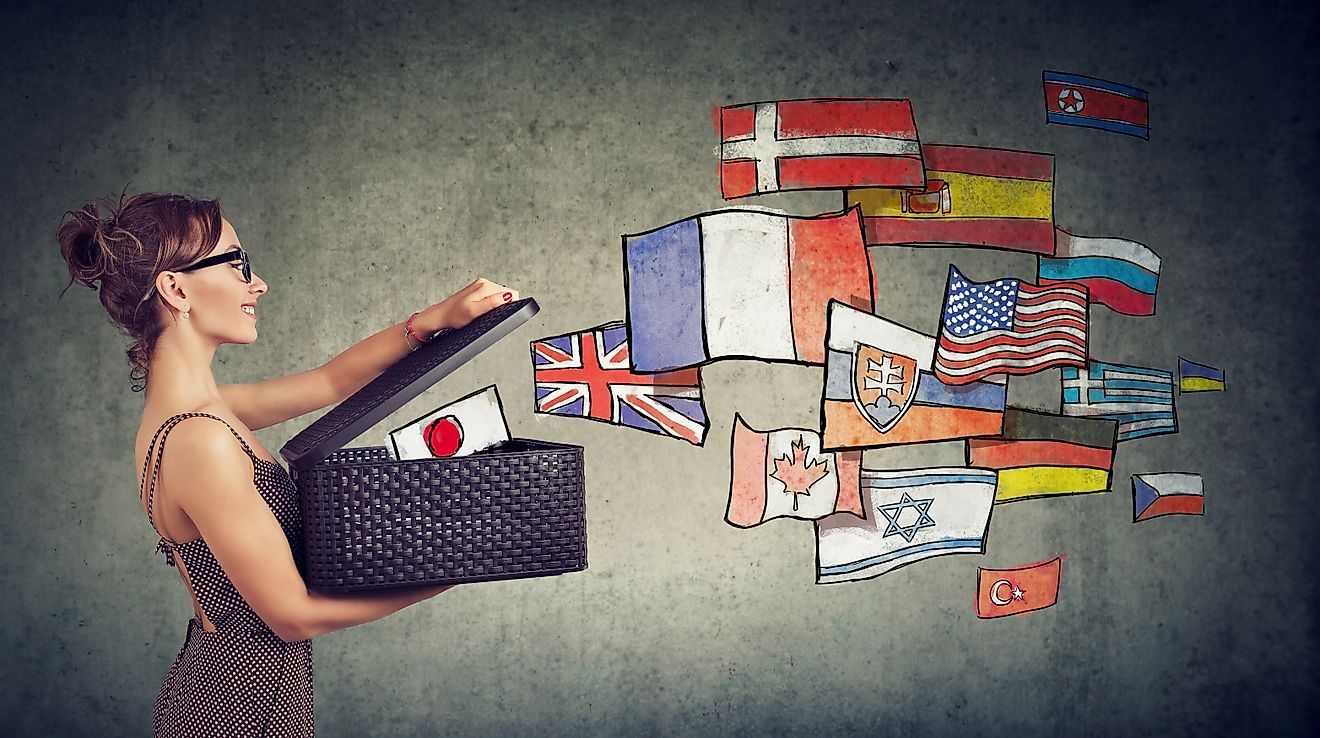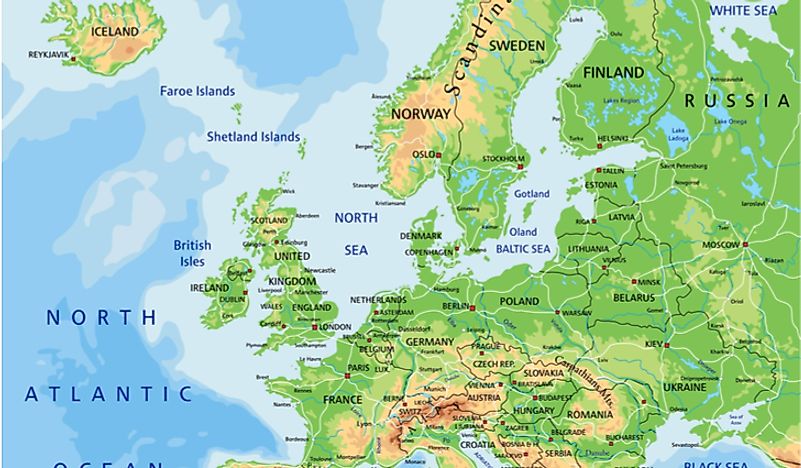Latin American Countries
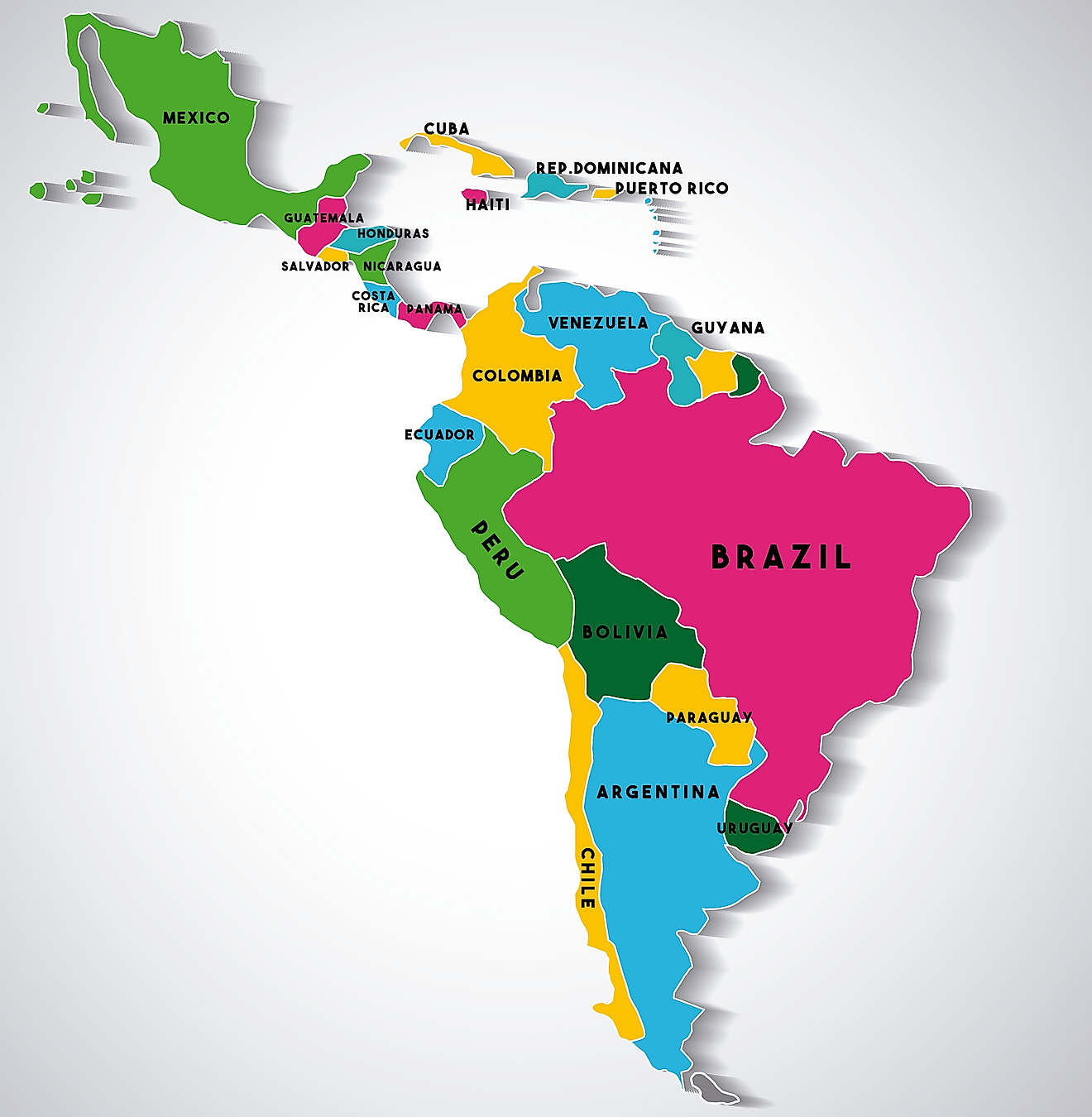
- Latin America consists of 33 countries.
- Brazil is the largest and most populous country in Latin America. It also has the region's biggest economy.
- Mexico is the largest and most populous Spanish-speaking country in the world.
- Approximately 659 million people live in Latin America.
Latin America is a vast region of the Western Hemisphere that stretches from the U.S.-Mexico border all the way down to the southern tip of South America. Thus, it includes Mexico, Central America, the Caribbean, and South America. Historically, Latin America was named as such by its former European colonial masters to distinguish countries in which Romance languages like Spanish, Portuguese, and French were spoken from countries in which Germanic languages, like English, German, and Dutch, were spoken. Today, while most of Latin America still speaks Romance languages, the geographic term also includes a few countries and territories in the Caribbean and South America in which languages like English and Dutch are spoken. The region is now home to approximately 659 million people living in 33 different countries.
Contents:
Mexico
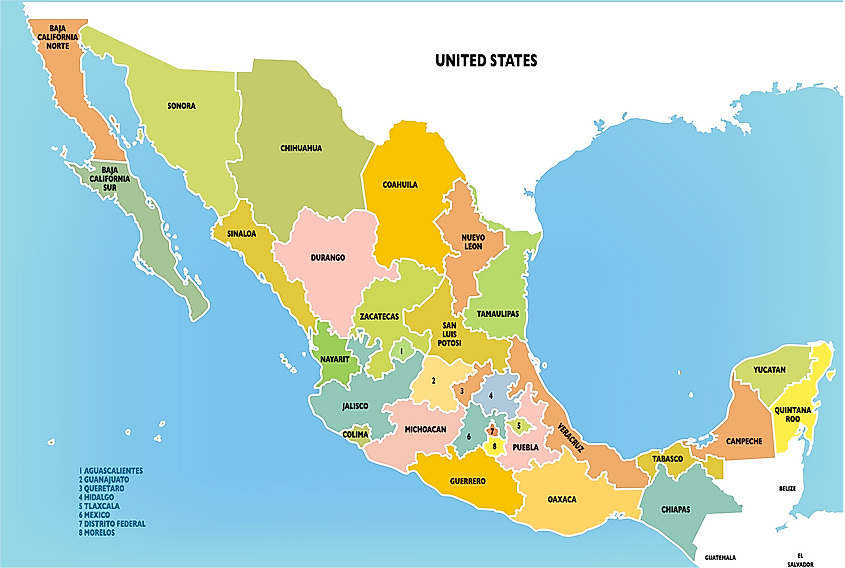
Mexico is the largest and most populous Spanish-speaking country in the world, with a total population of approximately 129 million people, and a total land area of 1,943,950 sq. km, which also makes it the second-biggest country in Latin America. Mexico is a federal state similar to the U.S. and Canada. In fact, its official name is the United Mexican States. The country has 31 states in total, plus the capital, Mexico City.
Mexico has a rich history and culture, which includes ancient civilizations like those of the Aztec and Maya. The ruins of ancient sites like Chichen Itza, Palenque, and Teotihuacan are popular tourist attractions today. Indeed, Mexico has become a mecca for tourists, many of whom flock to the country’s resort towns, which include Cancun, Puerto Vallarta, and Acapulco.
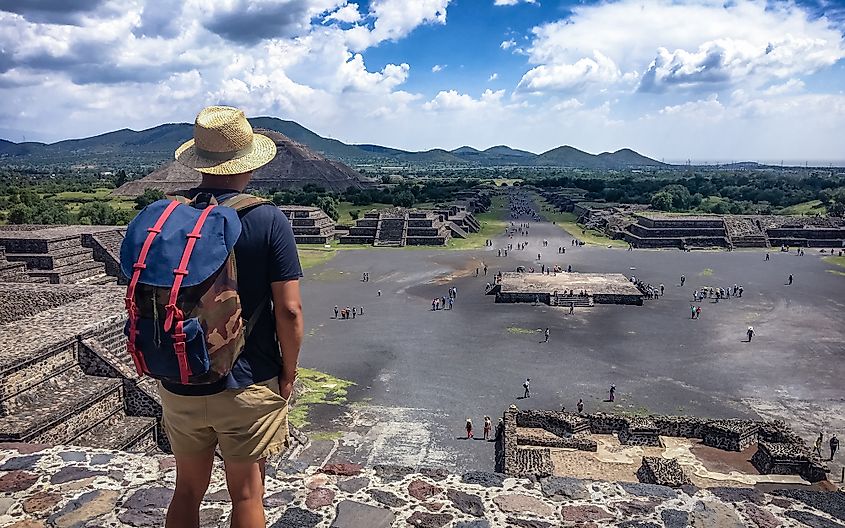
Aside from tourism, Mexico’s main economic activities include manufacturing and the export of oil and gas. Mexico is a country of very rich people and very poor people. In fact, the country has the second highest degree of socioeconomic disparity among the 34 countries of the Organization for Economic Cooperation and Development (OECD).
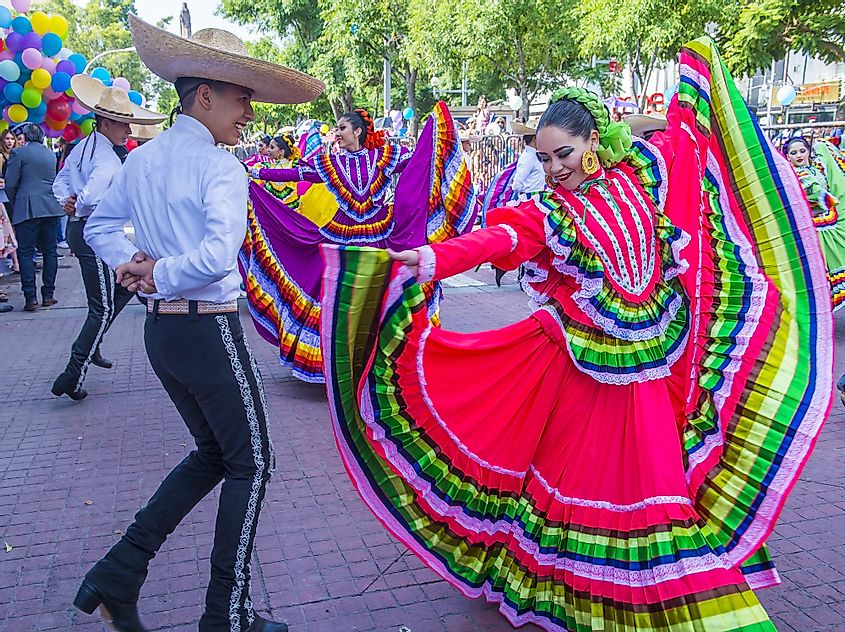
The people of Mexico are a blend of many cultures, including pre-Columbian indigenous people and descendants of Spanish colonists. Many Mexicans, especially in southern Mexico, still speak indigenous languages. A great divide in the country exists between those of colonial heritage and those of indigenous heritage. The southern part of Mexico, where most people are of indigenous heritage, is significantly poorer and less developed than the north.
Central America

Central America is the southern extent of the North American continent. It stretches from Mexico’s southern borders with Guatemala and Belize to the border between Columbia and Panama. Central America contains 7 countries:
- Guatemala
- Belize
- El Salvador
- Nicaragua
- Costa Rica
- Panama
- Honduras
All but one of these countries, Belize, have Spanish as their official language. Guatemala is the most populous country in Central America, with a population of about 17.9 million, while Belize is the least populous, with approximately just 397,000 people.
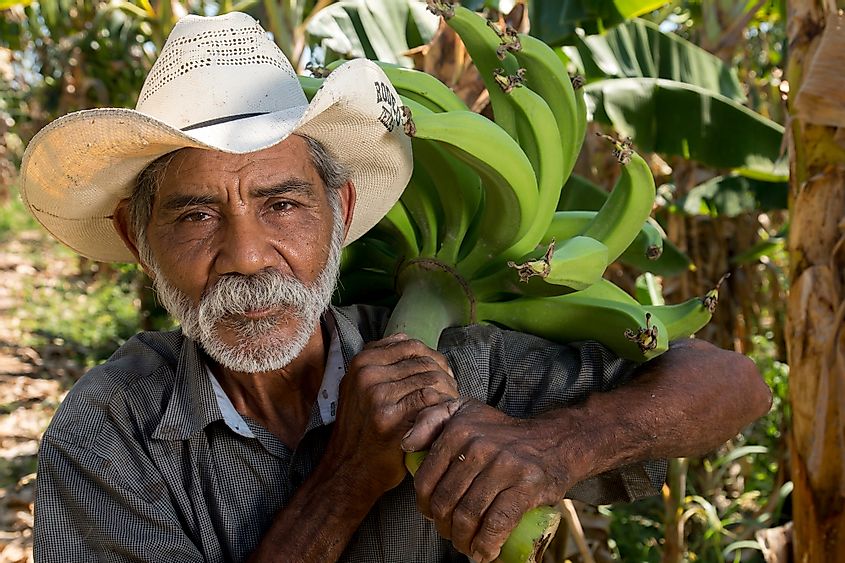
Historically, the economy of Central America has depended on two major cash crops, coffee and bananas. The term “banana republic” was originally a reference to the economies of Honduras, Costa Rica, and Panama, which were heavily reliant on the exports of the fruit. In fact, it was bananas that led to a CIA-backed coup in Guatemala in 1953, after the U.S.-based United Fruit Company urged the U.S. government to take action against the Guatemalan government for attempting to nationalize the company’s land in the country and distribute it to the country’s peasants. Today, the economy of Central America is more diversified, though agricultural exports like coffee, bananas, and pineapples are still important. Costa Rica, for example, has developed an impressive medical technology-producing sector. Panama has seen significant economic growth due to its investments in mining, transportation, and logistics. The country is also home to the strategic Panama Canal, which provides a vital shipping lane linking the Atlantic and Pacific Oceans. Tourism is also a growing sector in Central America.
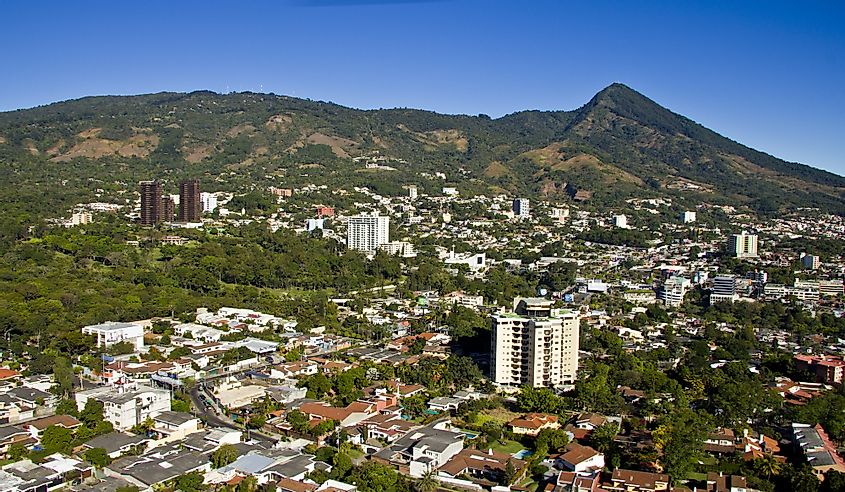
The region has unfortunately gained a reputation for violence and poverty. The situation is particularly dire in what is known as Central America’s Northern Triangle, which consists of El Salvador, Guatemala, and Honduras. In recent years, an average of about 265,000 people per year have left the region to escape the seemingly endless cycle of violence and poverty. Many try to reach the U.S.
The Caribbean
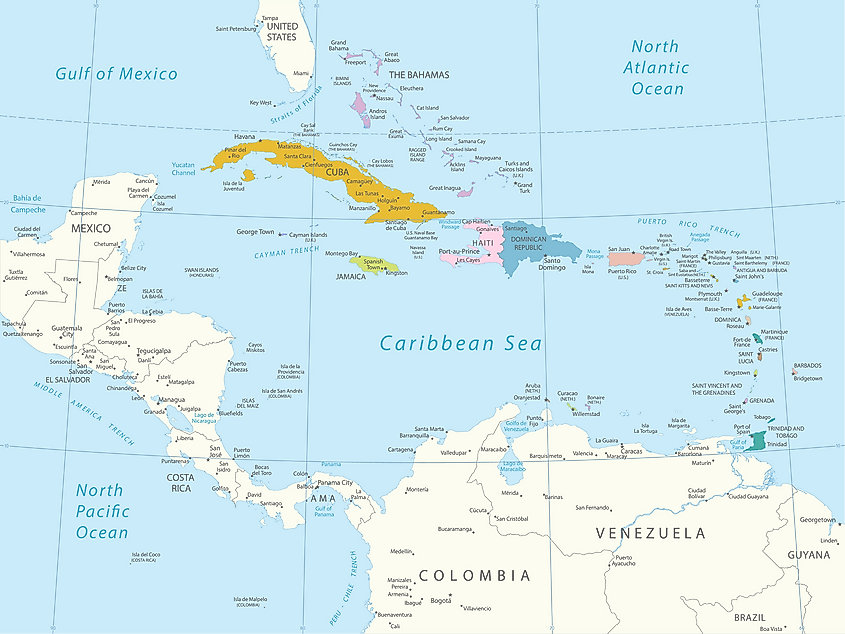
There are a total of 13 countries in the Caribbean.
- Antigua and Barbuda
- The Bahamas
- Barbados
- Cuba
- Dominica
- Dominican Republic
- Grenada
- Haiti
- Jamaica
- Kitts and Nevis
- Lucia
- Vincent and the Grenadines
- Trinidad and Tobago
The most populous country in the Caribbean is Haiti, in which about 11.4 million people live. Not too far behind is Cuba, which boasts a population of 11.3 million. Cuba is also the largest country in the Caribbean, with a land area of 106,440 sq. km. The total population of the Caribbean is close to 44 million. Most of the people of the Caribbean are speakers of Romance languages. Spanish is spoken in the countries of Cuba, the Dominican Republic, and the U.S. territory of Puerto Rico. French is the dominant language in Haiti, as well as several overseas territories of France that are located in the Caribbean. English and Dutch are spoken in the rest of the Caribbean countries and territories. Another language known as Creole, which is a blend of European languages and languages of African descent, is spoken throughout the Caribbean, and has several dialects.
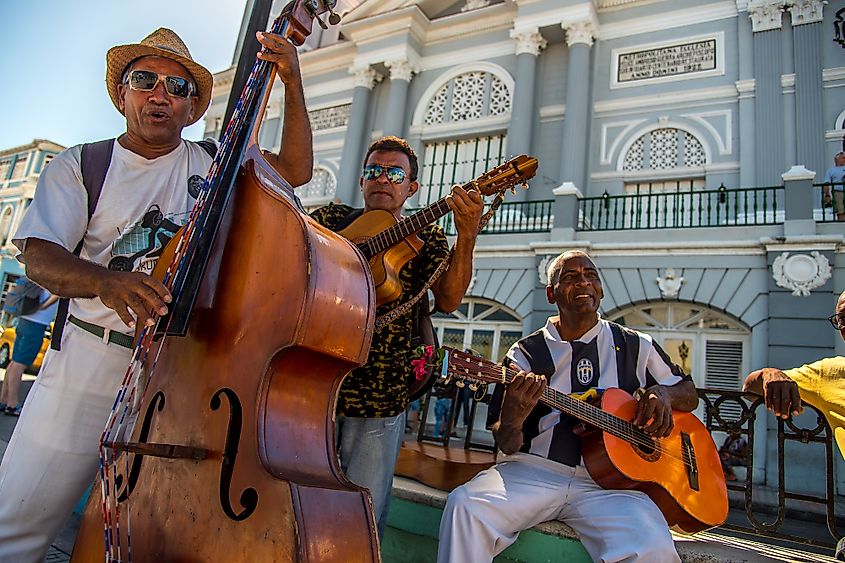
The people of the Caribbean are multiracial and multicultural. Some Caribbean countries, such as Haiti, have populations that are predominantly of African descent, while other countries, like the Dominican Republic have very racially-mixed populations. A large segment of Trinidad and Tobago’s population is of South Asian descent. Remnants of the Caribbean’s indigenous population still exist in some countries. The island country of Dominica, for example, is the only country in the eastern Caribbean with a sizeable population of pre-Columbian indigenous people. In a 2014 study of Cuba’s population, 8% were found to have traces of indigenous Caribbean ancestry.
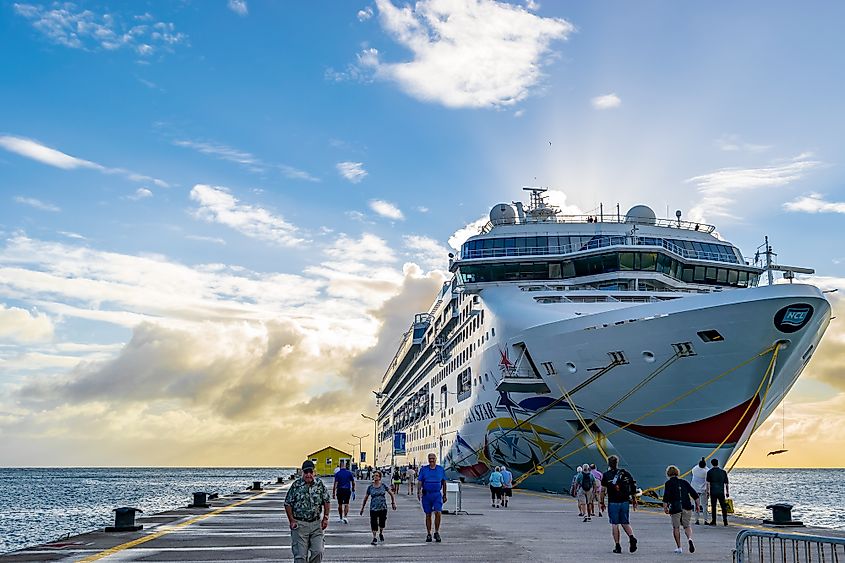
In terms of economics, the Caribbean is best known for its tourism sector, though not exclusively. The Bahamas, for example, has a robust financial services sector. Jamaica’s economy is strongly reliant on remittances from Jamaicans living abroad, and the countries of Cuba and the Dominican Republic are still famous for their cigars.
South America
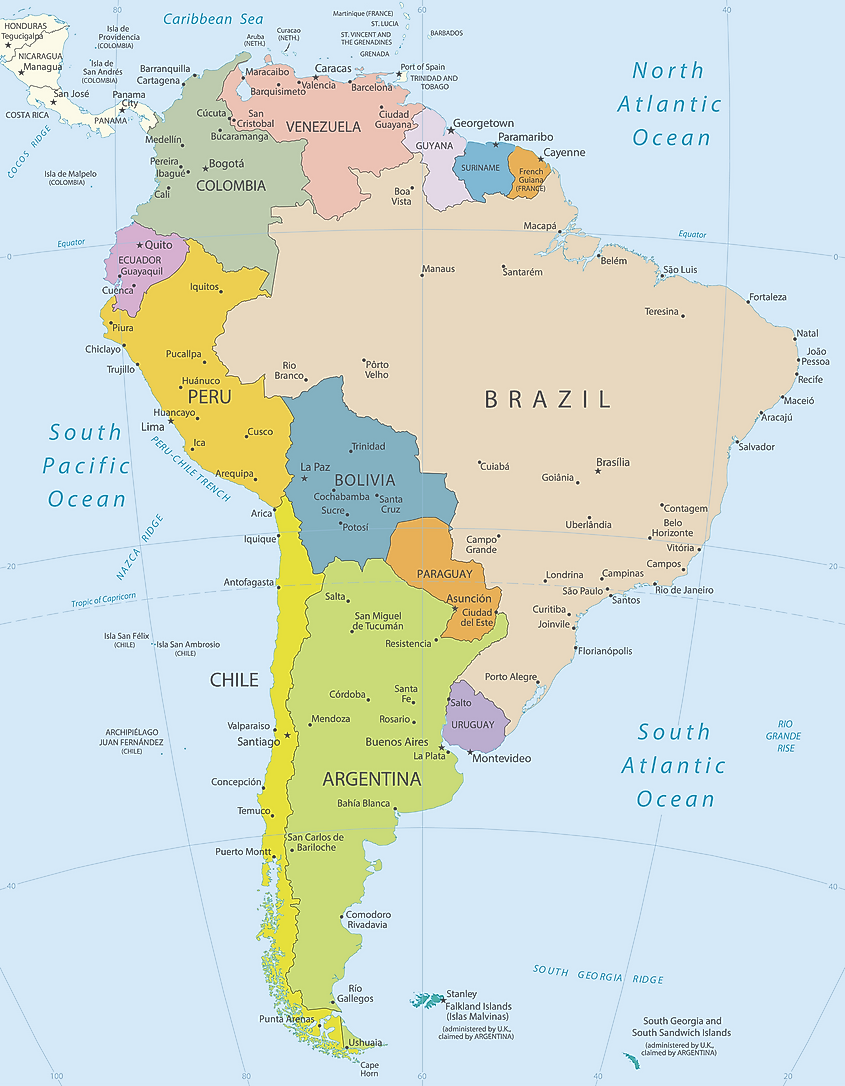
South America consists of 12 countries:
- Brazil
- Columbia
- Argentina
- Peru
- Venezuela
- Chile
- Ecuador
- Bolivia
- Paraguay
- Uruguay
- Guyana
- Suriname
Spanish is the official language in all but three of the above countries, Brazil, Guyana, and Suriname. Portuguese is the official language of Brazil, while French is the official language of the French overseas territory known as French Guiana. English and Dutch are the official languages of Guyana and Suriname respectively. The Falkland Islands, which is geographically part of South America, is a British overseas territory, thus English is the official language there. In addition to the Spanish and Portuguese spoken by the overwhelming majority of South Americans, millions of people in South America also speak indigenous languages. One of these languages is Quechua, which is spoken by those of Incan descent.
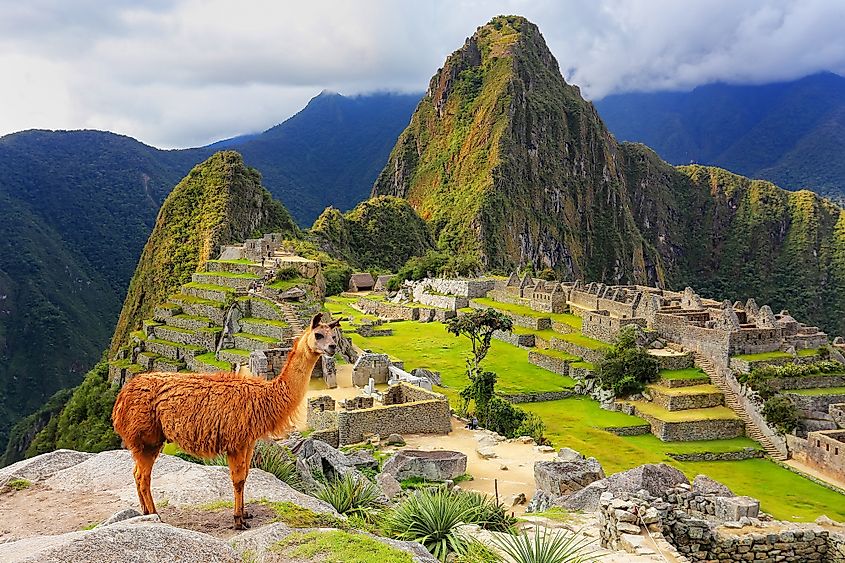
The Inca Empire, which existed in parts of modern-day Peru, Bolivia, and Chile, was arguably the greatest pre-Columbian civilization in South America, noted for building famous landmarks like Machu Picchu.
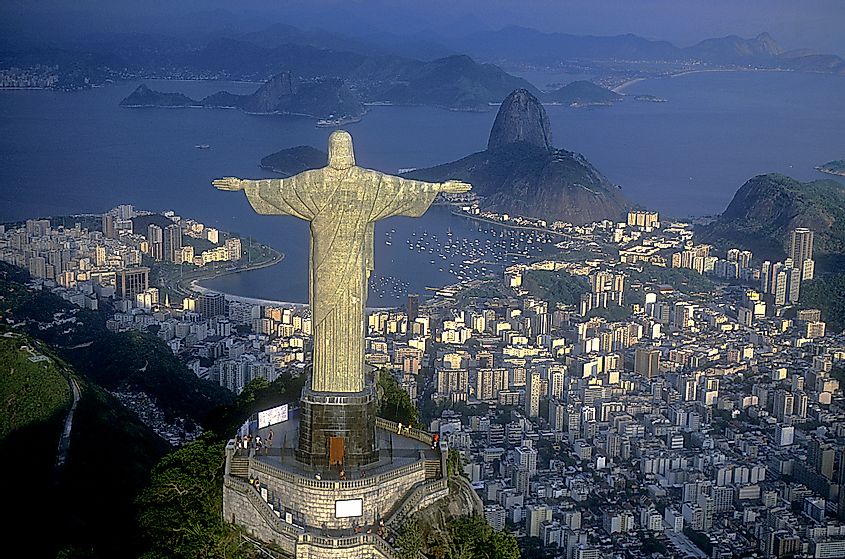
Indigenous people still number in the millions in South America. The rest of the continent’s population is of European, African, Asian, or mixed descent. In total, there are more than 433 million people living in South America. Brazil is the largest and most populous country in both South America and Latin America as a whole. It has a population of approximately 212 million, and a total land area of 8,358,140 sq. km. Brazil also has the biggest economy in both South America and Latin America. In fact, the country has the 9th largest economy in the world.









